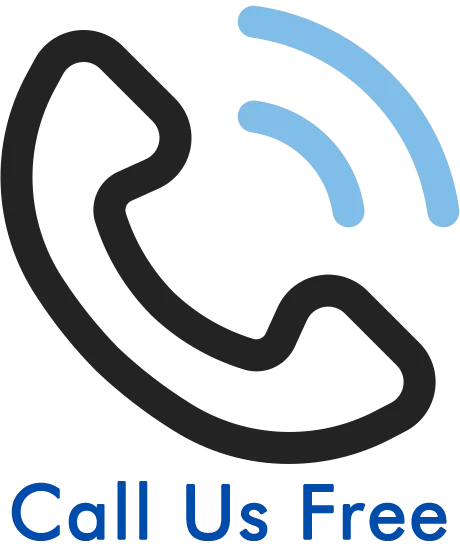Broken Back Compensation Claims In The UK
By Daniel Pike. Last Updated 29th January 2024. Have you suffered a spinal injury as a result of someone else’s negligence? In this guide, we will explore broken back compensation claims, and explain the circumstances under which you could be eligible to claim compensation for a spinal cord injury.
First, we will detail what could cause spinal injuries, and how parties such as employers should strive to keep you safe in the workplace. Then, we will discuss compensation in personal injury claims, and the two heads of loss that you could receive if your claim succeeds.
You might be wondering how long you have to start the claims process. Our guide will touch on the time limits for broken back compensation claims, and explore the exceptions to this limit.
Finally, we will explain the benefits of working with a solicitor on your spinal injury claim, and how a No Win No Fee arrangement could help you access the services of a legal expert.
Contact Our Team
Our team are here to help if you are interested in claiming for a back injury. They can evaluate your claim for free, and answer any questions you may have about the claims process. To get started, read on, or contact us by:
- Calling us on 020 3870 4868
- Using the live chat feature.
- Contacting us online.
How to claim broken back compensation
Services And Information
- When Could Broken Back Compensation Claims Be Made?
- Calculating Broken Back Compensation Claims
- What Limitation Period Could Affect Your Claim?
- Make A No Win No Fee Broken Back Injury Claim
- Related Services
When Could Broken Back Compensation Claims Be Made?
There are various ways that you could suffer a broken back. Some examples include:
- In the workplace – While at work, you are owed a duty of care by your employer under the Health and Safety at Work etc. Act 1974. Per their duty, they must take reasonable steps to ensure your safety while you are working. You could suffer a spinal injury if your employer failed to provide you with appropriate manual handling training, causing you to suffer a sprain due to poor lifting technique.
- On the roads – All road users must navigate the roads in a manner that avoids causing harm to others and themselves. This is their duty of care. They must also adhere to the rules and regulations found within the Highway Code and the Road Traffic Act 1988. If a drunk driver were to crash into your car, this could cause you to suffer multiple injuries, such as a broken back and a leg injury.
- In public places – Those in control of a public space owe you a duty of care under the Occupiers’ Liability Act 1957. Per their duty of care, they must take necessary measures to ensure your reasonable safety while you are using that public space. You could suffer a spinal injury if you were to slip on a spillage in a supermarket that had not been cleaned or clearly signposted within a reasonable timeframe.
Regardless of the type of accident you were injured in, all broken back compensation claims must meet the personal injury claims eligibility criteria in order to be valid. This is:
- Someone must have owed you a duty of care.
- They must have breached their duty of care.
- You suffered your injury as a result of this breach.
To see whether you may have a valid personal injury claim and to receive free advice, you can contact one of our advisors today.
Calculating Broken Back Compensation Claims
You may have questions about how much compensation you could receive if you make a successful claim for a broken back injury. In truth, it is tricky to guess how much you could receive for your claim at this stage because of the various factors which have to be considered.
The injuries you’ve suffered, how severe they are and how they’ve impacted your life is all taken into account. Therefore, compensation payouts can vary a lot if you were to compare different broken back claims.
The table below shows compensation brackets for different types of back injuries. The compensation brackets come from the Judicial College guidelines and they are based on payouts made in past cases.
These figures do not offer any sort of guarantee on how much you’ll be compensated for your back injury. However, they can offer some idea of the general amount which may be offered depending on how severe your injury is.
Please note that the first entry of this table has not been taken from the JCG.
| Injury | Description | Compensation |
|---|---|---|
| Combined Severe Injuries And Special Damages | Multiple severe injuries are combined with significant financial losses, for example, this could include lost earnings or the cost of home adjustments | Up to £1,000,000+ |
| Severe Back Injury (i) | Cases of the most severe injury involving damage to the spinal cord and nerve roots | £91,090 to £160,980 |
| Severe Back Injury (ii) | May include nerve root damage and impaired mobility | £74,160 to £88,430 |
| Severe Back Injury (iii) | Spinal discs or spine bones are damaged, leading to disabilities such as severe pain | £38,780 to £69,730 |
| Moderate Back Injury (i) | Applies to many injuries which may cause relatively moderate disabilities | £27,760 to £38,780 |
| Moderate Back Injury (ii) | Can apply to many injuries which disturb ligaments, muscle or soft issue | £12,510 to £27,760 |
| Minor Back Injury (i) | Full recovery or a recovery to nuisance level takes place within about 2-5 years | £7,890 to £12,510 |
| Minor Back Injury (ii) | Full recovery takes place without surgery between three months and two years | Up to £7,890 |
| Minor Back Injury (iii) | Full recovery is made within three months | Up to £2,450 |
Back Injury Compensation Payouts – Other Examples
The back injury compensation examples shown above relate to general damages. In other words, they are awarded for the pain and suffering caused by your injuries.
The other head of claim you could be eligible to receive is known as special damages. This figure could reimburse you for financial losses that your injuries have caused. For example:
- Medical costs
- Loss of earnings
- Travel costs
- Adaptations to your home
- Walking aids
You will need evidence to support this, such as receipts or payslips. To find out more about back injury claims or back injury compensation and the payouts you could receive, get in touch with our advisors today.
What Limitation Period Could Affect Your Claim?
The usual time limit for starting a broken back compensation claim is three years from the date of the accident which caused your injury. Sometimes, however, a back injury is not identified until some time after the accident occurred.
If this applies to you, then the three-year time limit starts from the day your broken back could be diagnosed and you knew it was the fault of a third party, like your employer. This is known as the date of knowledge.
Under some circumstances, the three-year time limit for starting a claim may be frozen for at least a temporary period. For instance, it can be put on hold for children who suffer a fractured back. The three-year time limit does not start for children who had their back injured in an accident until the day they turn 18.
A compensation claim can’t be started by an injured child before they reach their 18th birthday. However, a claim could possibly be started before their 18th birthday on their behalf by a representative known as a litigation friend. This representative could be someone close to the child, such as a parent or guardian.
The three-year time limit for claiming for a broken back is also put on hold if the victim lacks the mental capacity to act on their own behalf. In such cases, a claim could potentially be started by a litigation friend representing the injured party.
If at some point, the injured party regains enough mental capacity to make their own decisions, then the three-year time limit for claiming starts from the day this occurs.
Make A No Win No Fee Broken Back Injury Claim
Now that you know more about the broken back injury claims process, you might be questioning the benefits of working with a solicitor. There are many ways that personal injury solicitors could help you throughout the claims process; for example, they could help you collect supporting evidence to strengthen your case and make sure that your claim is fully filed in time.
Our panel of expert solicitors work on a No Win No Fee basis. This means that they offer their clients a form of No Win No Fee arrangement known as a Conditional Fee Agreement (CFA). Under a CFA, you are generally not required to pay any upfront fees to your solicitor in order for them to start working on your claim. Likewise, if your case fails, you don’t need to pay your solicitor for their services.
However, if your back injury compensation claim succeeds, your solicitor will be due a success fee. This fee is taken as a percentage of your compensation and is deducted directly. The success fee is also limited by a legal cap, which helps ensure that you keep the larger share of compensation.
Contact Our Team
If you are ready to start your back injury compensation claim, our team of advisors are here to help. They can offer more insight into the spinal injury claims process and could potentially connect you with a No Win No Fee solicitor from our panel. Get started today by:
- Calling us on 020 3870 4868
- Using the live chat feature.
- Contacting us online.
Related Services
At UK Law, we have guides on claiming compensation for other types of fracture injuries. You can check out other fracture claim guides through the links below:
We also offer guides on different types of personal injury claims, such as the examples below:
Guide by ZS
Edited by BER










